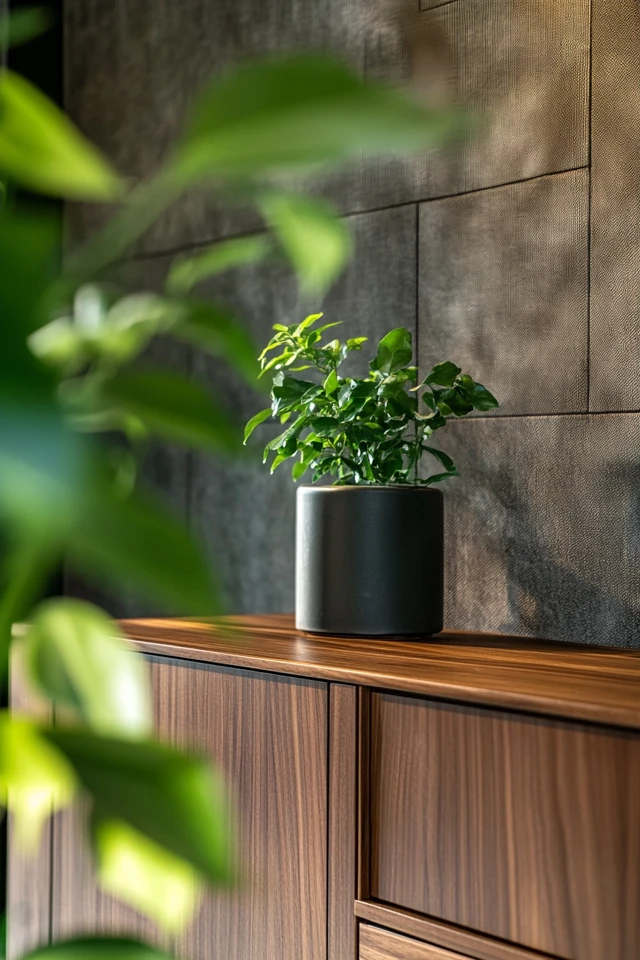Introduction
Walnut finishes are synonymous with mid-century modern design. The rich, warm tones of walnut wood, paired with its sleek grain patterns, evoke the timeless elegance and simplicity that defined this iconic design era. I remember falling in love with the style when I purchased my first walnut sideboard—it became the focal point of my living room and sparked a lifelong obsession with mid-century decor. Whether it’s a dining table, a credenza, or even smaller accents like picture frames, walnut finishes bring sophistication and depth to any space.
This guide will show you how to incorporate walnut finishes into your mid-century modern home, blending function, beauty, and that unmistakable retro charm. From large furniture pieces to subtle accents, here’s everything you need to know to embrace walnut wood in your design.
Why Choose Walnut for Mid-Century Modern Design?
Key Benefits
- Rich Aesthetic: Walnut’s deep, warm tones complement the clean lines of mid-century modern furniture.
- Timeless Appeal: It’s a durable material that ages gracefully and never goes out of style.
- Versatility: Works well with both neutral and bold color palettes.
- Sustainability: Often responsibly sourced, making it an eco-friendly choice for furniture and decor.
1. Incorporate Walnut Furniture
Why It Works
Walnut furniture is a staple of mid-century modern design, offering clean lines and natural warmth.
How to Style It
- Sideboards and Credenzas: These classic pieces add storage and instantly anchor your space.
- Dining Tables: Pair a walnut dining table with iconic mid-century chairs like Wishbone or Eames designs.
- Coffee Tables: Opt for sleek, low-profile designs with tapered legs and rounded edges.
- Accent Chairs: Choose frames with walnut finishes and pair them with neutral or leather upholstery.
2. Use Walnut in Your Kitchen
Why It Works
Walnut cabinetry and accents bring an organic, sophisticated feel to a mid-century-inspired kitchen.
How to Style It
- Install walnut cabinets with minimal hardware to keep the focus on the wood’s natural beauty.
- Pair walnut with white countertops, like quartz or marble, for a modern contrast.
- Add walnut floating shelves to display dishware, plants, or retro decor.
- Incorporate walnut bar stools with tapered legs for seating that ties the look together.
3. Style With Walnut Lighting Fixtures
Why It Works
Lighting with walnut accents creates visual interest while staying true to the mid-century aesthetic.
How to Style It
- Choose pendant lights or chandeliers with walnut finishes and brass or matte black detailing.
- Use table or floor lamps with walnut bases or stems for functional accent pieces.
- Incorporate arc floor lamps with walnut detailing for a bold, sculptural statement.
- Combine with warm white light bulbs to enhance walnut’s natural richness.
4. Add Walnut Accents
Why It Works
Smaller walnut details can introduce mid-century charm without committing to large furniture pieces.
How to Style It
- Use walnut picture frames or mirror frames to create a cohesive gallery wall.
- Incorporate walnut trays, bowls, or candleholders for subtle, functional decor.
- Add walnut coasters or desk organizers in home offices for a polished look.
- Style bookshelves with walnut bookends for a refined touch.
5. Pair Walnut With Bold Colors
Why It Works
Walnut’s warm tones are the perfect base for the bold, vibrant colors often associated with mid-century design.
How to Style It
- Combine walnut with mustard yellow, teal, or burnt orange accents in rugs, pillows, or artwork.
- Use navy blue or deep green walls as a backdrop for walnut furniture to create a dramatic, moody vibe.
- Add colorful upholstery or patterned cushions to walnut chairs and sofas for retro flair.
6. Mix Walnut With Other Materials
Why It Works
Combining walnut with contrasting materials enhances the mid-century modern aesthetic.
How to Style It
- Pair walnut with brushed brass or gold hardware for a luxe look.
- Combine walnut furniture with glass tops or metal legs for an industrial edge.
- Use soft textiles like wool, velvet, or leather to balance the wood’s hard surface.
- Introduce natural stone elements, like marble or travertine, for added texture and depth.
7. Add Walnut to the Bedroom
Why It Works
Walnut’s calming tones make it an excellent choice for mid-century modern bedrooms.
How to Style It
- Opt for a walnut platform bed with clean lines and a low profile.
- Use matching walnut nightstands with minimalist hardware for symmetry.
- Add a walnut dresser with tapered legs to complete the look.
- Pair with neutral bedding and soft lighting for a serene, retro-inspired retreat.
8. Use Walnut in Open Shelving
Why It Works
Walnut shelves are functional and stylish, perfect for displaying decor in any room.
How to Style It
- Install floating walnut shelves in living rooms, kitchens, or bathrooms.
- Use them to display plants, ceramics, or vintage glassware for a mid-century vibe.
- Combine with black or brass brackets for a modern, industrial touch.
9. Create a Statement Wall With Walnut Paneling
Why It Works
Walnut paneling adds warmth and texture, making it a bold yet timeless design feature.
How to Style It
- Use vertical walnut slats on one wall to create a striking accent.
- Combine walnut paneling with neutral walls to maintain balance.
- Pair with mid-century furniture to complete the look without overwhelming the space.
10. Style With Walnut Floors
Why It Works
Walnut flooring creates a warm, cohesive foundation that enhances the overall design.
How to Style It
- Choose mid-tone walnut flooring to complement both light and dark furniture.
- Use area rugs in bold patterns or neutral tones to define spaces and add texture.
- Pair walnut floors with white walls and ceilings for an open, airy feel.
Picture Gallery
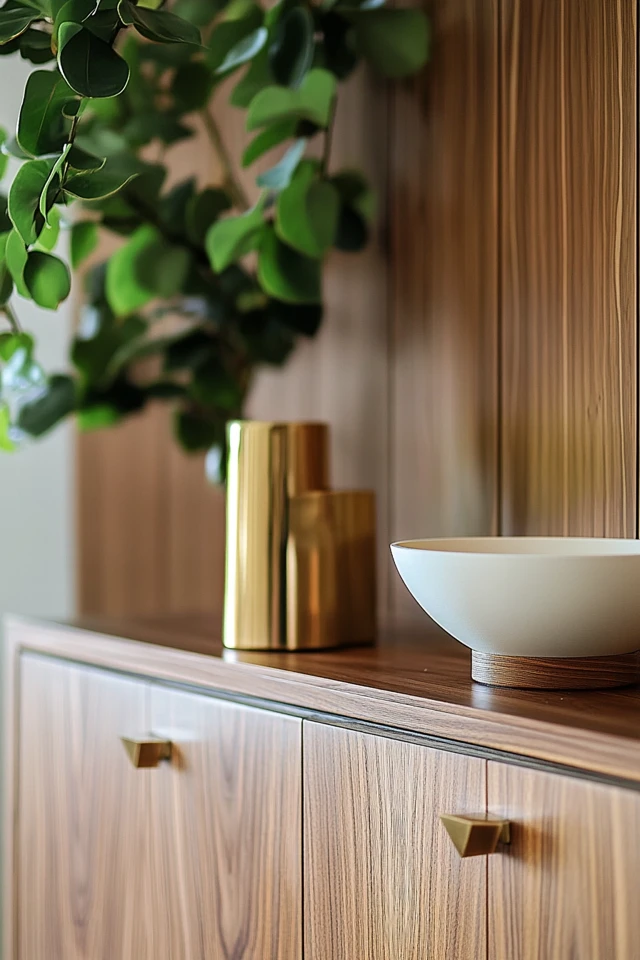
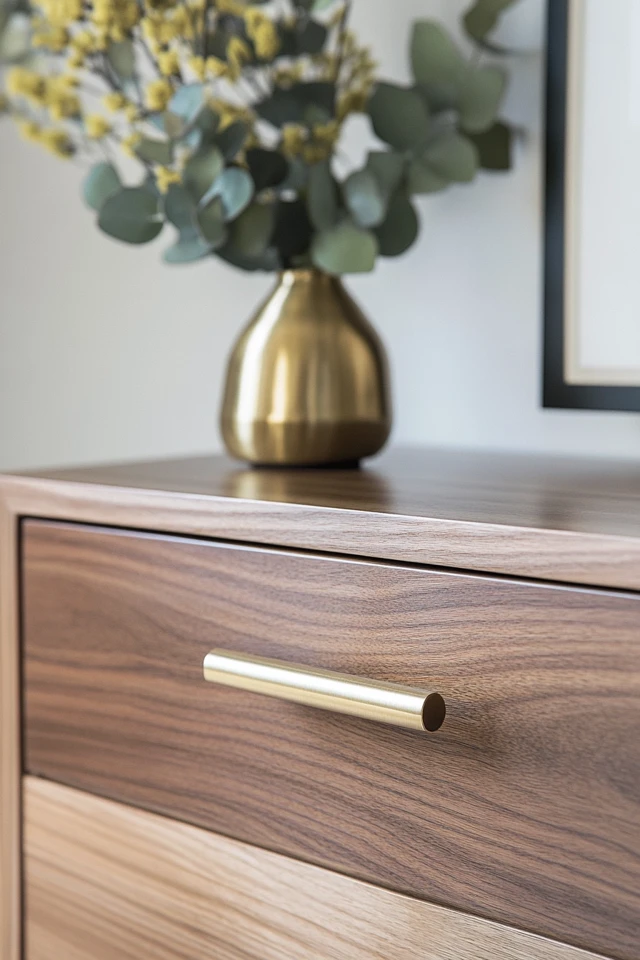


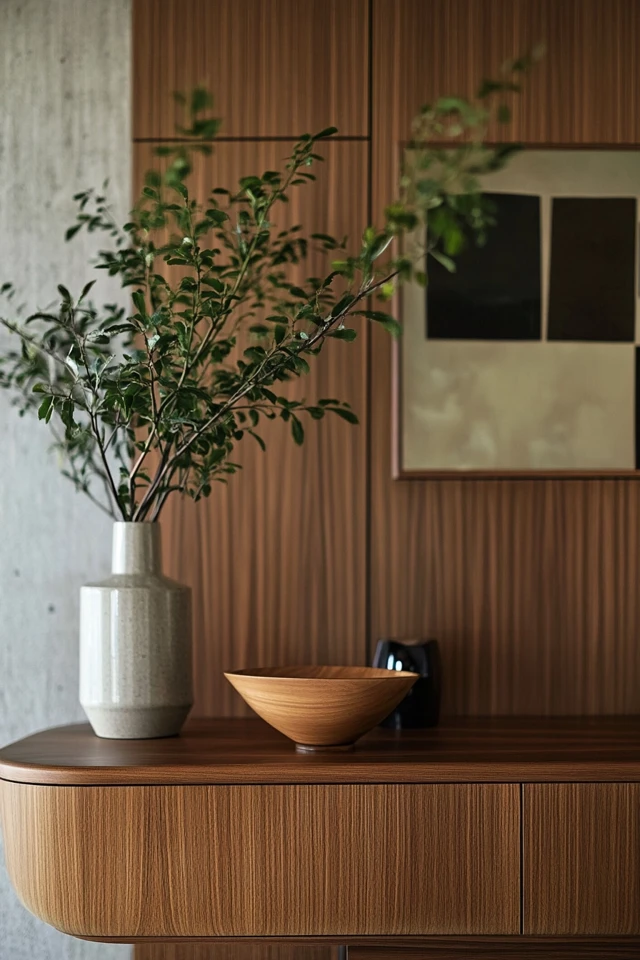
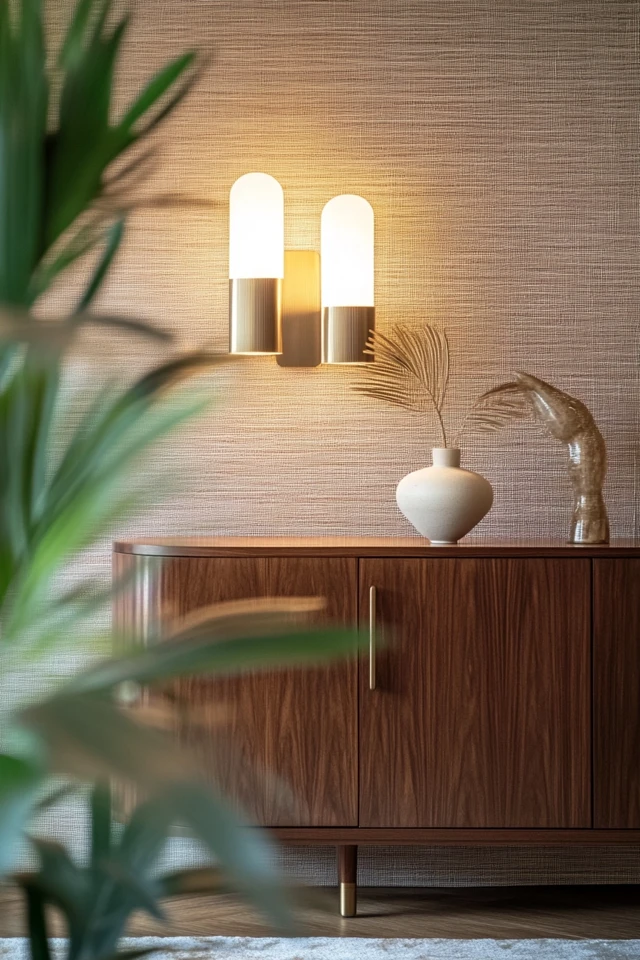
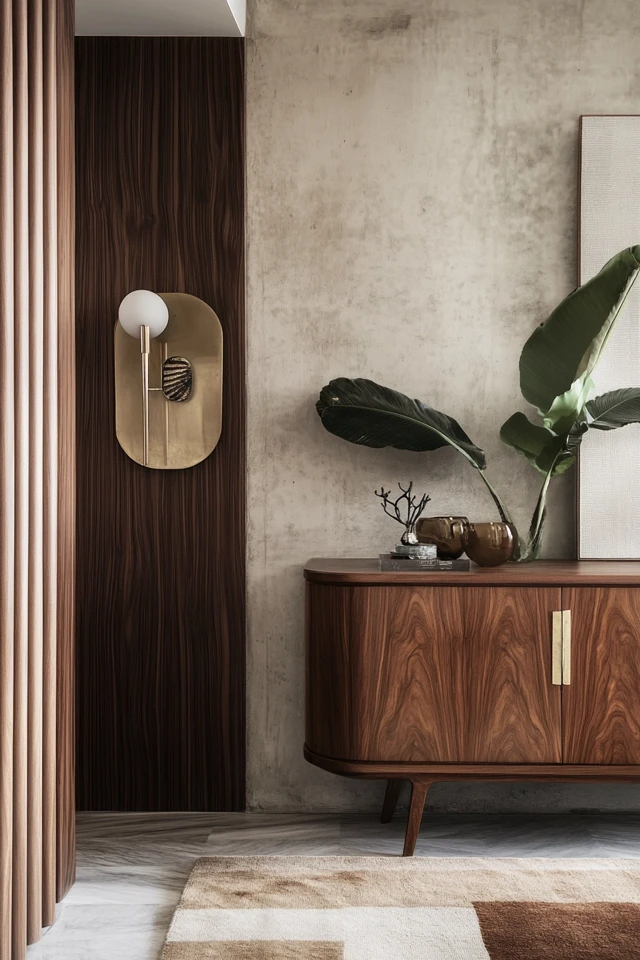
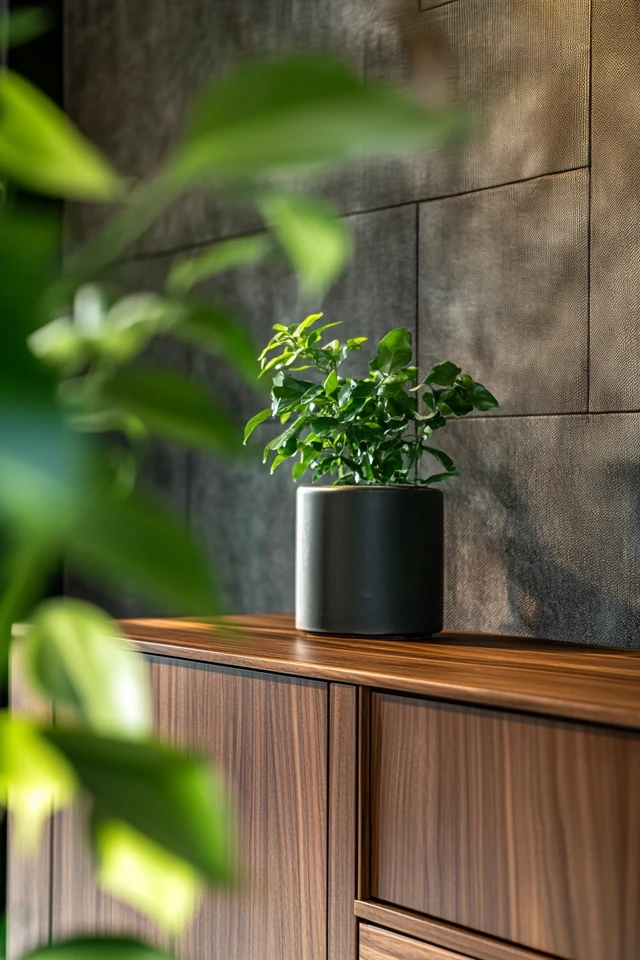
Conclusion
Walnut finishes are a cornerstone of mid-century modern design, offering warmth, sophistication, and timeless appeal. From large furniture pieces to small accents, walnut can elevate any space with its rich tones and natural beauty.
What I love most about walnut is its versatility—it can be the star of the room or a supporting player that ties everything together. Whether you’re updating your living room, kitchen, or bedroom, incorporating walnut is a surefire way to capture that iconic mid-century modern aesthetic.
So go ahead, invest in a walnut sideboard, add some floating shelves, or simply swap in a few walnut accents. Your space will thank you for the timeless charm it brings.
FAQ
Is walnut furniture durable?
Yes, walnut is a hardwood known for its strength and durability, making it an excellent choice for long-lasting furniture.
Can I mix walnut with other wood tones?
Absolutely! Pair walnut with lighter woods like oak or maple for contrast or with darker woods for a more cohesive look.
How do I maintain walnut furniture?
Clean with a soft, damp cloth and avoid harsh chemicals. Use furniture polish occasionally to maintain its shine and richness.
What colors pair well with walnut finishes?
Walnut complements neutral tones like white and beige as well as bold colors like teal, mustard yellow, and navy blue.
Can walnut finishes work in small spaces?
Yes! Walnut’s warm tones can make small spaces feel cozy and inviting. Opt for smaller pieces like shelves or side tables to avoid overwhelming the room.

